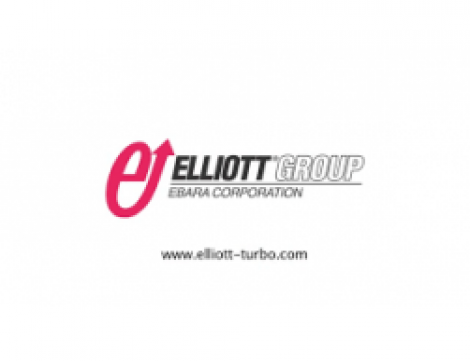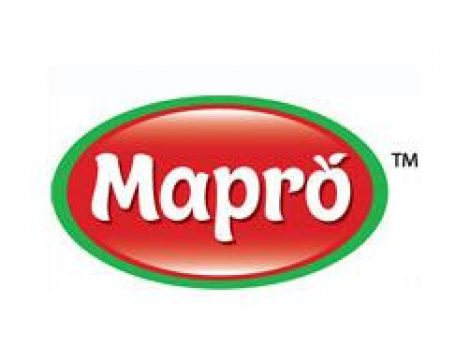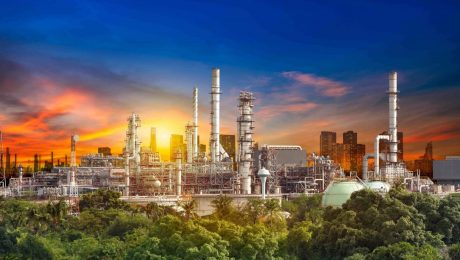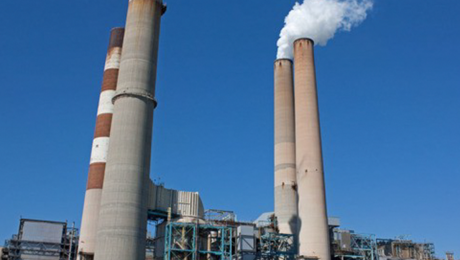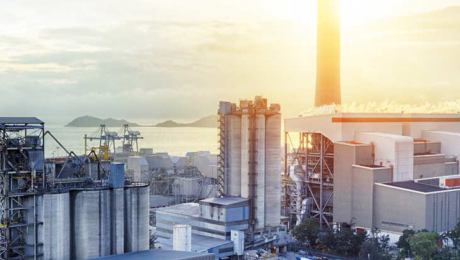- Home
- About Us
- Products
- EPC projects
- Technology
- Services
- Clients
- Media
- Blog
VIEW ALL -
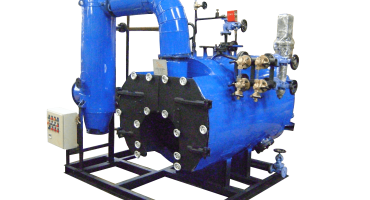 19 July 2023 by bullweb, in Boiler
19 July 2023 by bullweb, in BoilerA Guide to Boiler Maintenance in Chemical Processing Plant
Steam boiler systems are irreplaceable in the chemical process industries. Among...READ MORE +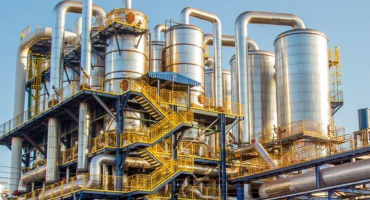 19 October 2022 by bullweb, in Steam Boiler,Steam Jackets
19 October 2022 by bullweb, in Steam Boiler,Steam JacketsSteam Jackets in Boilers | Definition, Types, and Applications
Steam is integral to meet various process operational requirements in manufactur...READ MORE +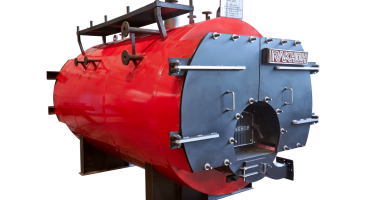 17 October 2022 by bullweb, in Boiler,Steam Boiler
17 October 2022 by bullweb, in Boiler,Steam BoilerSigns that indicate replacement for steam boilers
Steam boilers are vital equipment for steam generation in the process and manufa...READ MORE +
- Careers
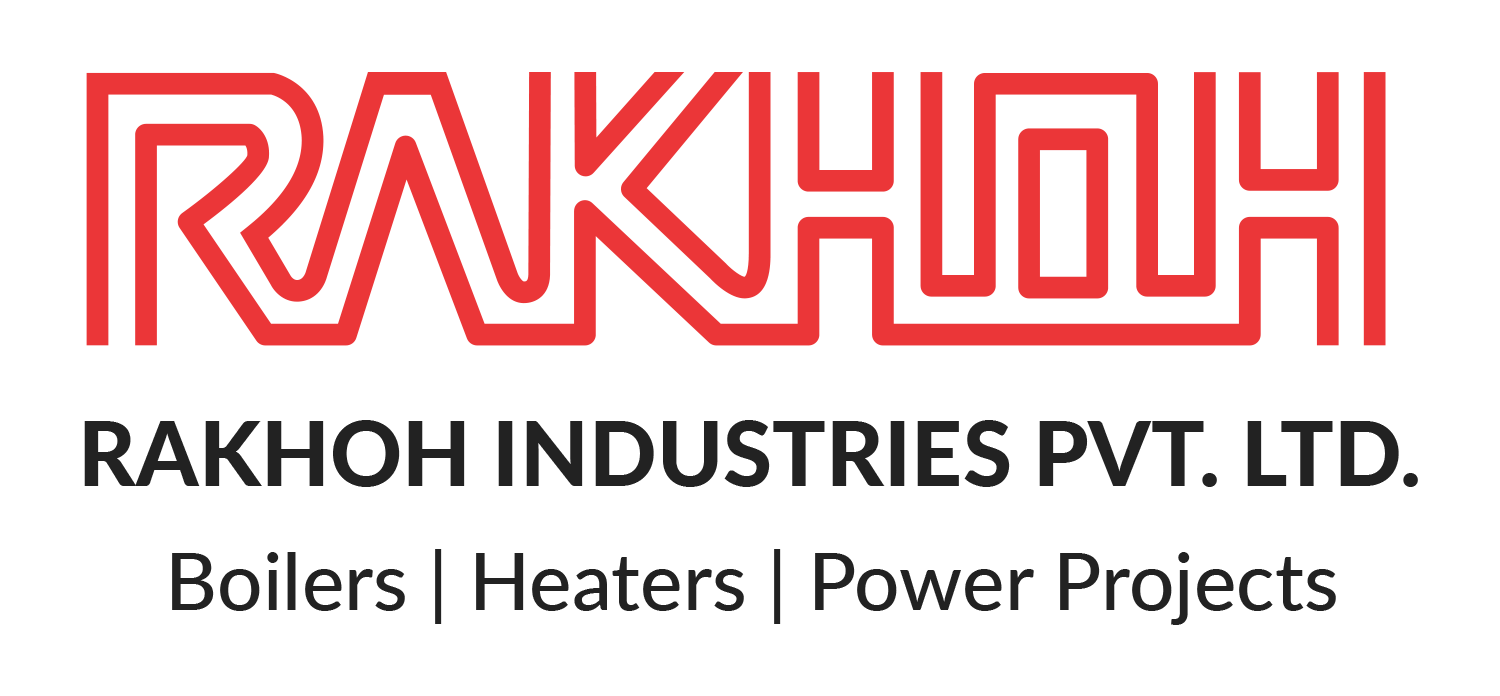
BOILER ACCESSORIES, THERMIC FLUID HEATERS & SPECIALTY FABRICATION.
+9120 - 66308333
Email: enquiry@rakhoh.com
RAKHOH BOILERS
S-11, T Block, M.I.D.C.,Bhosari, PUNE - 411 026. Maharashtra, India
BLOG & STORIES
Combustion is pivotal for heating in steam boilers. Air is crucial for combustion and plays an important role in fuel burning and must be supplied with precision, in different ratios, depending on the type of fuel used. Steam boiler systems in Thermal Power plants use different types of centrifugal fans. It provides air for combustion, fuel to the burners, circulates the gasses for enhanced heat transfer, and releases exhaust gasses. Depending on the boiler size and airflow requirement, various types of fans are used with varying capabilities. Draught fans are essential in thermal power plants by providing tremendous support to the various process activities related to power generation.
Two types of fans used in a boiler power plant are– Draft Fans and Other Process Fans.
- Draft Fans:
Draft fans are important for thermal power plants as it maintains the flow of gasses through the steam boiler system. Draft fans are classified further as Forced Draft fans and Induced Draft Fans.
Forced Draft fans in the power plant are centrifugal fans, utilizing radial airflow blading. It provides the necessary air for fuel combustion by pushing air through the combustion air supply system to the furnace. Located at the inlet of the boiler to push high-pressure fresh air into the combustion chamber, it mixes with the fuel to produce positive pressure.
Compared to Induced Draft fans, Forced Draft fans are more efficient and easy to maintain with clean operating conditions. Backward curved and airfoil centrifugal fans are the most common centrifugal fans used as FD fans.
Induced Draft Fans exhausts all flue gasses from the boiler through the dust collector, passing it to the chimney and into the open atmosphere. Therefore, ID fans are located at the outlet of the steam boiler system. Induced Draft fan creates a negative pressure to discharge the gasses after combustion from the furnace.
As Induced Draft fans can capably handle hot flue gasses, it faces more corrosion and erosion issues. Radial fans and backward inclined blade centrifugal fans are the most common types of Induced Draft fans used in a boiler power plant.
Other Process Fans:
Other Process fans used in a boiler power plant are,
- Primary Air Fan
- Secondary Air Fan
- Flue Gas Recirculation Fan
- Primary Air Fan:
Primary air fans or PA fans are high-pressure fans that supply the air for transportation of coal in the boiler power plants directly from the pulverizer to the furnace. PA fans supply positive pressure upstream of the coal pulverizer.
In power plants, Primary Air fans provide air in conveying the pulverized coal to the furnace area. PA fans produce pressure upstream of the pulverizer for pushing the coal and air mixture through the pulverizer into the furnace.
The most common centrifugal fan used as a PA fan in a boiler power plant is Backward Curved Centrifugal Fan.
- Secondary Air Fan:
The secondary fans or SA fans play a vital role in power plants. The secondary fan helps with the complete combustion of the fuel in the furnace. SA fans increase the airflow as required, to improve efficiency and avoid fuel wastage. Coal-fired thermal plants account for the highest share of electricity generation compared to other methods like hydroelectric, wind, gas, or solar-based plants. Furthermore, SA fans can run continuously. Considering the transportation expenses and high costs of coal mining, it is not ideal to do inefficient burning of the coal in the furnace. Due to all the mentioned factors, secondary fans play a key role in maintaining the efficiency of the thermal power plant.
- Flue Gas Recirculation Fan:
Flue gas recirculation fan reduces the flue gas pollution content in the exhaust gasses from thermal combustion processes. Flue gas recirculation fans are used in a power plant boiler for controlling steam temperature and furnace heat absorption.
Flue gas recirculation fans extract gas from the economizer outlet and the inlet of the pre-heater. It later discharges the gas either to the bottom of the furnace to control the steam temperature or to different locations in the furnace.
Backward curved centrifugal fans are the most common type of gas recirculation fans used in a boiler power plant.
Role of Primary Air Fan and Secondary Air Fan in Thermal Plants:
Air supplied in thermal plants boilers for combustion reacts with the fuel as per its stoichiometric ratio. However, some percentage of air provided for combustion remains unreacted.
It usually occurs due to the fuel quantity fed at once and variation in the fuel particles size. Therefore, a certain amount of extra air requires to be provided to compensate for the air that went unreacted.
Conclusion:
Fans of various types and ratings are used as process fans in power plants. Draught fans are typically heavy-duty centrifugal fans that are an essential and irreplaceable component of a thermal power plant.
Rakhoh Boilers is a leading boiler manufacturer in Pune since 1983 with a successful record of installing 3000+ boilers in over 26 countries worldwide. We provide superior quality steam boilers, waste heat recovery systems, thermic fluid heaters, and boiler accessories.
To learn more about our products and services, visit www.rakhoh.com
Steam Boilers are one of the most important equipment in any power plant and process industry that require constant monitoring and inspection at frequent intervals. In a steam boiler, various sections are controlled at the same time with primary sections, such as the boiler drum, a boiling section producing high-temperature water for steam generation. Excessive water level leads to improper steam generation. Steam & Drum Level is critical and difficult to measure and maintain to automate the system and reduce human errors. Precise control of the water level in the drum is an important factor that is performed by developing a PLC and SCADA system. It helps to reduce the manual operation and provide enhanced control and monitoring of the plant and process operations through a SCADA system, a centralized system for supervising the process by preparing the required data respective to process changes.
Programmable Logic Controller (PLC):
Programmable Logic Controller (PLC) is a digital computer for automation that can re-program the logic as per the users’ requirements in industries. PLC is also used for the internal storage of instruction for the function implementation such as logic, sequencing, timing, counting, and arithmetic to control through digital or analog input/ output modules.
Working of Programmable Logic Controller (PLC):
At the start of each operational cycle, the CPU brings in all the field input signals from the input signals from the module to store them into internal memory as a process of the input signal. This internal memory of the CPU is known as the process input image (PII).
The user program is available in the CPU program memory. The CPU takes the status of input from PII and processes it in the user program, and its result is stored in the internal memory of the CPU. This internal memory is called process output image. At the end of the program run, the CPU transfers the signal states in the process image output to the output module and resultantly, to the field control.
- Input-Output in PLC
- Input Layout:
- Feed Pump
- RTD Transmitter
- Level Switch
- Pressure Transmitter
- Output Layout:
- Solenoid Valve for the water inlet
- Solenoid Valve for Steam Outlet
- Heater
Supervisory Control and Data Acquisition (SCADA):
As the name suggests, SCADA stands for Supervisory Control and Data Acquisition that helps with the supervisory level as it is not a complete control system. SCADA is used for monitoring and controlling plants or equipment. The control may be automatic or managed by operator commands. The data acquisition is completed by the PLC’s scanning the field inputs connected to the PLC that is usually at a fast rate. The central host scans the PTU’s at a slow rate and the data is processed to detect alarm conditions. If an alarm is present, it is displayed on special alarm lists.
PLC and SCADA in Industries:
PLC and SCADA are used to develop and implement boiler automation. Various sensors measure the temperature, pressure, and water level. The parameters are assessed through SCADA, and the operation is controlled by using PLC. The entire arrangement shuts down if the temperature and pressure reach a predetermined value and the automatic check valve opens to discharge the steam and pressure. An emergency alert is activated, and automatic check valves are opened to avoid any hazardous failure. Boiler control is a crucial part of any process plant.
The steam boiler in a process plant or power generation project is controlled through a variety of methods. The method to be used is determined by several objectives such as rising profit, increased efficiency, superior quality, and other factors that are dependent on the industry. Boiler automation has become vital for meeting the primary goal of providing easy operation to these facilities and the needs of the industries. The changes that are consistently taking place in the industrial sector are partially the result of boiler automation. The automation process, which is gradually assuming its position in all process plants throughout the world, has been given priority. It has prepared itself to examine the critical components of the entire process operation, along with their implementation and any difficulties that may arise.
Conclusion:
Rakhoh Boilers are renowned for their efficient and reliable steam boilers, waste heat recovery boilers, thermic fluid heaters, and boiler accessories since their inception in 1983. We also provide excellent boiler services like energy audit, steam trap assessment, boiler automation, annual boiler maintenance, fuel conversion, etc., to enhance the efficiency and productivity of steam boilers.
Learn more about our products and services at www.rakhoh.com
Power generation plants are widely preferred by manufacturing industries; which require extensive power and steam for operational purposes. Power generation or cogeneration plants utilize steam to produce power or electricity. It uses external mechanical energy to convert into electrical energy that drives the electric charges to produce electricity. Steam generated in boilers is used for the production of electricity through turbines. In turbines, the steam, liquid, or combustion air pushes a series of blades on a rotor. The force compels the blade to spin or rotate that converts the mechanical energy of the rotor into electrical energy. Therefore, turbines are indispensable for generating power for large-scale industries.
Factors such as high-strength steel, contaminated steam, etc., in the turbine, affect its overall performance. Deposition, corrosion, and erosion are the most commonly found issues in steam turbines.
Deposition in Turbine:
Depositions form and settle in the steam passage and negatively impact the shape of turbine blades and nozzles. Various factors cause deposit formation, but the effects are usually the same. Depositions increase the resistance of the steam flow. The hindrance in steam passage affects steam pressure and pressure drops, thereby reducing the steam turbine efficiency. In severe conditions, deposition can result in excessive rotor thrust that unbalances the rotor and causes vibration issues. With poor steam purity, turbine deposits can accumulate on turbine blades in a short time.
Causes of Deposition in Steam Turbine:
Water Impurity:
Utilization of impure water for attemperation of steam or leakages in closed heat exchangers causes turbine depositions. Examining the attemperating system should be ensured if the turbine deposit persists after using pure water. It should be ensured that the attemperation water and steam are equally pure.
Boiler Water Salts Vaporization:
Vaporization of salt in the boiler water is another cause of steam turbine deposition, specifically silica, as it can vaporize into the steam at low operating pressure. It causes deposition issues in the turbine due to the increased solubility of silica at high temperatures. When the steam cools through the turbine, it results in reducing the solubility and forming depositions. It is essential to control the quantity of silica in the steam, and maintain it below 0.02 ppm to reduce the steam turbine deposition.
Localized silica saturation occurring and condensing from the steam is also a source of turbine deposition. Partial evaporation of precipitated silica can result due to a portion of silica dissolved with the continuous steam flow. It leads to deposits remaining in the steam turbine.
Entrainment:
Entrainment of drops of boiler water in steam is inevitable. However, excessive boiler water carryover leads to steam-carried solids producing steam turbine deposits. Some of the common causes of high boiler water carryover are priming and foaming. A high level of water carryover is a usual occurrence that also results in superheater tube failures.
Removal of Deposits:
When the turbine is affected with boiler water salts due to water carryover or attemperating water impurity, the water washing can retain the turbine capacity. It requires special attention and should be conducted under a boiler manufacturer or turbine vendor guidance to avoid severe damage to turbine performance. In case the turbine is contaminated with compounds not water-soluble, it is recommended to remove the deposits by blasting with aluminum oxide.
Erosion:
Erosion of turbine blades leads to rough surfaces that hinder the path of steam flow that reduces the efficiency and capacity of the steam turbine. Solid particles such as iron oxide present in steam cause erosion at a high-pressure end of the turbine. Water in steam causes erosion of intermediate and low-pressure blades. Erosion is also caused, due to operating below design inlet steam temperature or low load that leads to condensation. The presence of carbon dioxide or other acidic components in the condensate can increase the damage. Low distribution ratio amines for neutralizing the acid level and increasing the pH of the condensate can control erosion in the steam turbine
Corrosion:
Some of the issues of steam turbines include pitting, stress corrosion, and corrosion fatigue, usually due to chloride, sulfate, sodium hydroxide, and sulfides. The contaminant solubility in steam decreases as the steam expands through the turbine. It condenses on the surface at higher solution concentrations that cause corrosion. Chloride deposits lead to pitting on rotors, buckets, and disks. Corrosion can be controlled, by maintaining an oxygen-free or condensate-free atmosphere.
Methods to Clean Steam Turbine:
Blast Cleaning:
Blast cleaning is an ideal method for the removal of deposits from the rotating areas of the turbine. The method enables a Nondestructive test (NDT) that aids in removing persistent deposits.
Water washing:
Although water washing dissolves the soluble deposits, the insoluble deposits require mechanical force with high-pressure jet and sandblasting. The water washing method is advantageous for removing the chemically water-soluble aggressive compound.
In close water cleaning, the turbine is cooled or heated at 100°C and filled with condensate through a turbine drain. The rotor is manually turned by hand, and the condensate is drained after 2 to 4 hours. The process is repeated numerous times.
Manual cleaning with solvent:
Cleaning with the hand is a slow process, best suited for inaccessible surfaces and the blade parts that may get damaged with blast cleaning.
Wet steam cleaning:
Soluble salt deposits can be removed effectively from turbine blades through plasma-activated wet steam. The method is usually used during the steam turbine operation.
Rakhoh Boilers have successfully manufactured highly efficient and reliable steam boilers and cogeneration boilers for more than 20 process industries in India and overseas. With 38+ years of expertise in thermal solutions, Rakhoh is a globally trusted name for industrial steam boilers and boiler services.
Visit www.rakhoh.com to know more about our products and services.
The term heat exchanger is referred to equipment that transfers heat from one medium to the other. With steam boilers, combustion gas passes its heat to water to achieve evaporation. It is known as a fired heat exchanger. The term is usually applied to shell and tube heat exchangers or plate heat exchangers for heating a process with a primary fluid like steam. Shell and tube heat exchanger is used for heating water for space heating by using water or steam. It is generally known as a non-storage calorifier, consisting of a hot water storage vessel with an internal primary heating coil.
Types of Heat Exchangers:
Plate heat exchanger:
A plate heat exchanger includes a series of thin corrugated metal plates, wherein several channels are formed in between. The primary and secondary fluids flow through alternative channels as the heat transfer occurs from the primary fluid steam to the secondary process fluid across the plate.
The rigidity of plates increases with a corrugated pattern of ridges that creates turbulent flows in the channel. It enhances heat transfer efficiency, resulting in a compact design of plate heat exchangers as compared to shell and tube heat exchangers.
The plate heat exchanger allows both condensing and sub-cooling of condensate within a unit. The condensate, if drained to an atmospheric receiver can be monitored by reducing the condensate temperature. It results in reducing the amount of flash steam lost to the atmosphere through the receiver vent.
Earlier, plate heat exchangers were majorly used in the food processing industry and water heating purposes. However, with the advancement in designs, plate heat exchangers are preferred for steam heating applications.
Gasketed Plate Heat Exchangers:
Gasketed plate heat exchanger consists of plates clamped together in a frame that is sealed with a thin gasket around the edge. The plate pack is compressed between the frame plate and the pressure plate with tightening bolts. Gaskets offer resistance to thermal fatigue and sudden pressure variations in plate packs and are best suited as a steam heater for immediate hot water supply.
The operating temperature rate of the gaskets restricts the steam pressure.
Brazed Plate Heat Exchanger:
As the name suggests, the plates are brazed together using nickel or copper in a vacuum furnace in the brazed plate heat exchanger. It offers more resistance to high pressures and temperatures at a low cost compared to gasketed plate heat exchangers. However, it cannot be dismantled and requires chemical cleaning.
Although the brazed plate heat exchangers are sturdy in design, it usually faces thermal fatigue. For preventing thermal stress, sudden or frequent changes in temperature and load must be avoided. It is widely used for applications in which the temperature variations are slow.
Welded Plate Heat Exchanger:
Welded plate heat exchanger holds the plate pack together with welded seams between the plates with a laser welding technique. It offers more resistance to pressure pulsation and thermal cycling as compared to the brazed plate heat exchanger. The high temperature and pressure operating limits enable the heat exchangers to have higher specifications that are ideally suited for applications of heavy process industries. It is widely used for high pressure and temperature performance or to heat viscous components like oil or hydrocarbons.
Shell and Tube Heat Exchangers:
The shell and tube heat exchanger are the most commonly found indirect heat exchanger in manufacturing operations. A shell and tube heat exchanger includes a cylindrical shell containing a bundle of tubes. The tube ends are fitted in the tube sheets that separate the primary and secondary fluids.
While using condensing steam as the heating medium, the heat exchanger is mostly horizontal, with condensation occurring inside the tubes. The process of sub-cooling is also performed for recovering excess heat from the condensate in the heat exchanger. In cases requiring a high degree of sub-cooling, it is advisable to switch to a separate condensate cooler.
Selection of Heat Exchangers:
Selecting a heat exchanger system depends on the design pressure of the exchanger, the amount of time required in operation, and the initial and final temperature of the fluid to be heated. It is advisable to maintain heat exchanger steam pressure at a minimum that enables adequate heat transfer to minimize the condensate temperature before the steam trap.
Calculating Steam Consumption for Heat Exchangers:
Shell and tube heat exchangers and plate heat exchangers are primary examples of flow-type applications. The heat exchangers are generally sized on the full running load. The startup load is ignored in rare occurrences. Shell and tube heat exchangers are ideal for preventing heat loss and mishaps or injuries to the operating staff. Plate heat exchangers are compact in design, requiring less surface area.
The steam consumption of heat exchangers are calculated with the following formula:
Q = m cp ΔT
Where,
Q = Quantity of Energy
m = Mass of the substance
cp = Specific heat capacity
ΔT = Temperature rise of the substance
Rakhoh Boilers are trusted manufacturers of industrial steam boilers, boiler accessories, and pollution control equipment. Since its inception in 1983, Rakhoh has successfully installed more than 3000 boilers in 26 countries worldwide, carving its reputation as a leading steam boiler manufacturer and boiler service provider.
Visit www.rakhoh.com to explore our products and services.
